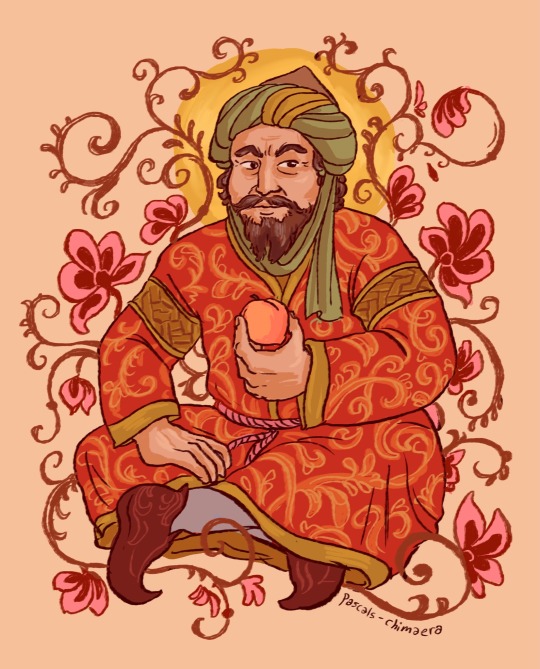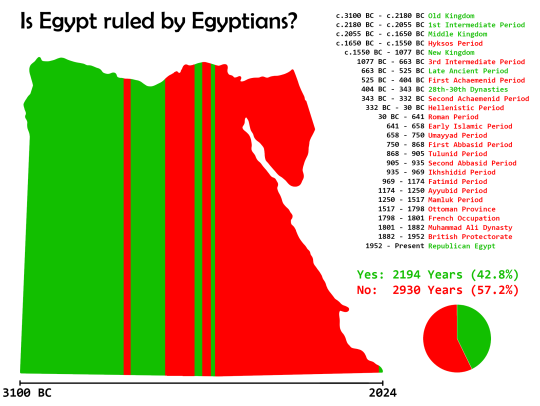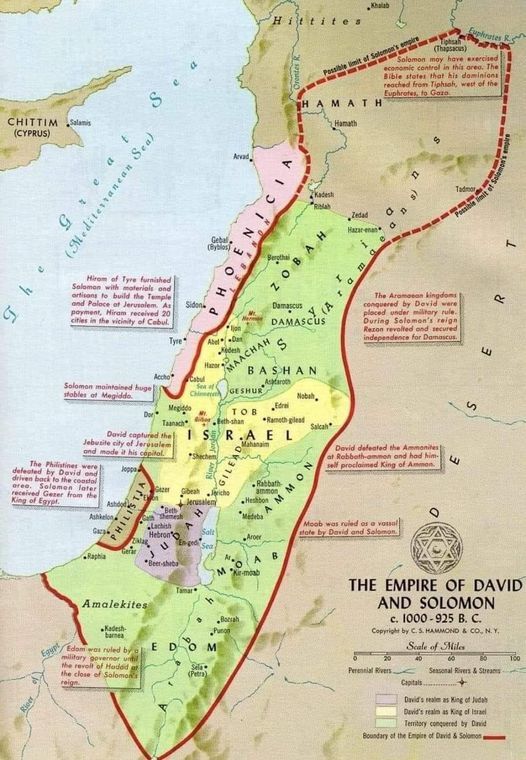#Ayyubids
Explore tagged Tumblr posts
Text

everything I learn about al-Afdal is like…..RIP dude… u never stood a chance
(From this article, “Eagles in the Sun: The Ayyubids After Saladin” by Paul A. Blaum)
#Al-Afdal#ayyubids#ayyubid empire#this article is like#he was a nice kid who fought with his more illustrious father#his brothers? Did NOT respect him lmfao#al-Adil: it’s free real estate……….#Saladin#12th century
7 notes
·
View notes
Text

Pınar Kaya. Arslanşah ve II. Tuğrul Dönemi Irak Selçukluları tarihi (1161-1194). Doktora tezi (2017) https://www.avetruthbooks.com/2023/10/pinar-kaya-arslansah-ve-ii-tugrul-donemi-irak-selcuklulari-tarihi-1161-1194-doktora-tezi-2017.html
#AbbasidCaliphate#AtabegsofAzerbaijanEldiguzids#AtabegsofFarsSalghurids#AtabegsofMaraghehAqSunqurids#Ayyubids#Bagrationidynasty#Dissertations#KermanSeljukSultanate#Khwarazmshahs#Oghuzs#PınarKaya#SeljukSultanateofIraq#Seljuqids#ShumlaKüştoğanoğluAydoğdu
0 notes
Text





















Kudüs Fatihi Selahaddin Eyyubi, Sedat Inci (2023-)
#narrows eyes#prominent military general sultanate leader and founder of the Ayyubid dynasty Salahuddin Ayyubi?!#anyway I wanted to point out the whole foster son lying subplot here#i'd have two nickels but it's strange that it's happened twice
17 notes
·
View notes
Text

Salah al-Din Yusuf ibn Ayyub, Sultan of Egypt and Syria. known as Saladin to the Franks.
I wrote about my process of making this piece, as well as my inspirations and image sources, on my website blog here
i had an interesting experience researching one of the images I had used as reference, since it turned out to have a different origin than I expected, so I documented my mini rabbithole as well!
#Saladin#Salah al-Din Yusuf ibn Ayyub#12th century#Medieval#Ayyubid dynasty#historical art#History#my art#Blog posts
58 notes
·
View notes
Text

Tomb of Ayyubid Sultan Saladin in Damascus, Syria
French vintage postcard
#ayyubid sultan saladin#sepia#damascus#photography#saladin#vintage#postkaart#ayyubid#ansichtskarte#ephemera#carte postale#postcard#postal#briefkaart#sultan#photo#tomb#syria#tarjeta#historic#french#postkarte
7 notes
·
View notes
Text
has anyone ever figured out how to prevent an essay spiralling out of the bounds of the question and word count? cause i reckon you could sell that
#yes i'm supposed to be writing a 1000 word analysis of alfreds pastoral care#yes i'm now reading about the educational system in the early ayyubid dynasty
2 notes
·
View notes
Note
could you please make the Fatima caliphate and the ayyubid dynasty

only did ayyubid sorry 😭 hope u like her though
#essen draws#countryhumans#countryhumans art#countryhumans ayyubid dynasty#how does it feel to be the only person who wants this#(very lighthearted) (she was fun to draw)
12 notes
·
View notes
Text
The slave galleys in Ben Hur are an anachronism. Romans, like most Indo-Europeans, did not use slave rowers, because ships were military and war defines the Indo-European freeman. If they needed slaves to row a warship, they freed them beforehand, rather than have to disgrace themselves by forcing slaves to fight.
No, it was Islam that introduced slave galleys to the Mediterranean—Islam that has a history nearly defined by slave soldiers, from Mamluks to Janissaries to ISIS making brainwashed Yazidi children into suicide bombers.
#salty amateur historian#study ottoman history and i defy you not to feel that vlad the impaler was a bleeding heart liberal#although the mamluks were the fatimids#whose 'not being fucking awful' can be gauged by the fact most of egypt remained christian under their rule#until saladin toppled them and set up the ayyubids#actually yeah it kinda seems like shia islam is a MUCH better thing for non-muslims than sunni#with iran being a major exception#and even then iran was one of two countries that intervened to protect armenians during the azeri invasion a couple years ago
4 notes
·
View notes
Text
The Fourth Crusade was mentioned in Diriliş Ertuğrul. This is where the Catholics (Latins) wanted to retake Jerusalem from the dynasty of Salahuddin: the Ayyubids.
They ended up sacking Constantinople (Eastern Roman Empire) and killing their fellow Orthodox Christians.
For those of you watching the Sultan Mehmed series, this video is an important backdrop to understand the tensions between the Orthodox Christians and Catholic Christians.
Disclaimer:
All rights belong to TRT.
This is for educational purposes.
#islam#muslim#history#islamic history#history blog#diriliş ertuğrul#dirilis ertugrul#ertuğrulgazi#resurrection ertugrul#ertugrul#constantinople#salah ad din yusuf ibn ayyub#ayyubid#seljuk#seljuq#catholic#orthodox christianity
1 note
·
View note
Text

Enameled glass goblet, Egypt or Syria (Ayyubid Dynasty) 1200 - 1250 AD
from The British Museum
694 notes
·
View notes
Text
Kemal Taşçı. Selçuklular zamanında Van Gölü havzası (1018-1243). Doktora tezi (2013)

Kemal Taşçı. Selçuklular zamanında Van Gölü havzası (1018-1243). Doktora tezi (2013) https://www.avetruthbooks.com/2023/09/kemal-tasci-selcuklular-zamaninda-van-golu-havzasi-1018-1243-doktora-tezi-2013.html?feed_id=17550
#History#AbbasidCaliphate#AtabegsofAzerbaijanEldiguzids#Ayyubids#BattleofManzikert#Dissertations#Hamdaniddynasty#HistoryofAzerbaijan#Ilkhanids#KemalTaşçı#Khwarazmshahs#MarwanidsDustakids#RashidunCaliphate#Sajiddynasty#SeljukSultanateofRum#Seljuqids#Sökmenliler#UmayyadCaliphate
0 notes
Photo
Note, I got this from that reddit post. I have not fact checked that this is an actual quote, although the information in the quote is very accurate.
"It has been said in the foreign press that I am the first Egyptian to govern Egypt since Cleopatra. Such words flatter but they do not align with our knowledge of our own history. For the sake of glorifying our own Blessed Movement, are we to say that the Fatimads were never Egyptian despite their centuries in Egypt? Do we now deny our kinship with the Ayyubids because of their origin even as we join Saladin's eagle with the Liberation Flag as the symbol of our Revolution? And what of the members of the Mohammed Ali dynasty? Should our grievances against the former King and the flawed and corrupt rulers before him blind us to the nationalism of Abbas Hilmi II, whose devotion to Egypt against the occupiers cost him his throne, or the achievements of Ibrahim Pasha, the very best of the dynasty, who himself declared that the Sun of Egypt and the water of the Nile had made him Egyptian? Are we now to go through the family histories of all Egyptians and invalidate those born to a non-Egyptian parent? If so, I must start with myself. It is fairer and more accurate to say that we are all Egyptians, but I am the first Egyptian to have been raised from the ranks of the people to the highest office to govern Egypt as one of their own. It is an honour and a sacred burden great enough without the embellishments that foreign observers would add to it." - Mohamed Naguib

Is Egypt Ruled by Egyptians?
by u/CharlesOberonn
#Cleopatra was greek#The Fatimads were Sicilian#the Ayyubids were Kurdish#and Muhammed Ali was Albanian#all until they became Egyptian
244 notes
·
View notes
Text
Let's Talk About Drolta's Historical Context

Okay, anyone who has been around like fifteen Months ago, when the first season of Castlevania Nocturne released knows the drill. Let's do some history.
I will talk a bit about some historical context of the new season and I am going to start with Drolta, because oh boy, she definitely is an interesting character in this context. After all we learn her backstory this season - and it is actually really interesting.
I am super sorry, right now I cannot do proper screenshots from the flashbacks. So bear with me.
Spoilers for season 2, obviously!
The first scene we see with Drolta is her at a temple of Sekhmet in Southern Egypt in what we get told is 1199 CE. Now, this is interesting. Because this is far, far after the end of anything recognizable as "Ancient Egypt". In 1199 CE what we now know as Egypt was under the control of the Ayyubid dynasty. A Muslim government.
Now, Egypt in terms of religion was a bit of a battleground in the early middle ages.
There is one thing y'all need to understand about the Ancient Egyptian religion. It has a lot of staying power. I have heard so many Egyptologists joke about this. Egypt was colonized so often - and while most other countries got then forced into another religion under the Romans and Greeks, somehow everyone in Egypt during Ancient Times went just and adopted the Egyptian religion. Something that is quite interesting, because Egyptian religion - in terms of anthropology - is an older religion that bears a lot of hallmarks of old religions. I talked about this before: From what we can say, first human religions worshipped animal gods, that then became some sort of chimera, that took up more and more human attributes, before the gods became humanoid in their appearance. And if you know anything about Egyptian religion, than it will be probably that the gods have all their animal aspects, dating it as a bit earlier than the Greek and Roman religion - even though some of the oldest Greek gods also have still their animal aspects (like Pan).
Now, due to the later Roman/Byzantine Empire Christianizing - and Egypt being part of it - Egypt was Christianized as well. And this is where we talk about this one historical figure that somehow haunts me in all my creative persuits: Emperor Theodosius I. He was a hardliner for Christianity. Until he came into power, Christianity was not exactly chill with the pagan religions, but accepted them somewhat. And then Theodosius enacted a decree that set fire to all the pagan temples in the Empire. And they burned down a lot of temples to the old gods. That was the Roman gods, the Greek gods, the Egyptian gods, and some pagan gods of a variety of smaller religions, like the Canaanites and such.
However, again: The Egyptian religion had a hell lot of staying power. So yes, people would often "convert" to Christianity at the point of a sword but secretly still pray to the old gods still.
Between the 7th and the 8th century, Egypt was taken over by the Muslims, and a lot of people converted to Islam. However, as I spoke about before: Muslims were always a lot more chill about other religions. So while people praying to other gods were higher taxed, it was generally just allowed.
In 1199 - as I said - Egypt was under the control of the Ayyubid Dynasty, with the majority of people living there being Muslim.
Realistically speaking, we do not have any historical evidence for any acitve temples to any of the Egyptian deities for after the 9th century, from all I know. While some aspects of the Ancient Egyptian religion were generally were incorporated into Muslim tradition - and still are to this day (like some Ancient holidays are still celebrated in Egypt to this day!) - but from all we know there was no active temple worship.
However, realistically speaking, obviously none of the temples held the actual mummy of an actual god. lol By the time Egypt Islamized, most of the actual mummies of even kings were long forgotten and burried under the sands of the deserts and people practices burial of the dead.
If there had actually been an active temple, yes. It is absolutely possible that this temple would have been attacked and plundered multiple times. And of course anyone still worshipping the old gods would absolutely know that their religion was kinda doomed to disappear. They would be a small holdout. And in this case there is of course the additional aspect of knowing that the goddess one prays to is already physically dead. (Fuck, I need to talk about the worldbuilding in this. I hope I will around it - because I am out of town over the weekend. Argh.)
The attackers we mainly see in the temple are just random bandits. However, the vampire who comes later, definitely wears a specific armor - though this is where I still need to do some research. While I recognize some aspects of the armor, I could not properly place it - because it is definitely a bit too early for Ottomans. (My first thought was Ottoman because of the helmet, but yeah, the Ottoman empire is 250 years out at this point.) The slightly pointed helmet was also used in some part of the Byzantine army, but again, this definitely is something I will look more into.
From there on, of course, her story gets more dominated not by the historical context, but by the fictional worldbuilding.
Something that is however interesting is, that she is of course a member of a cult - and that is by the historical definition of the word, not the modern one.
See, historically speaking cult members where people who among a religion praying to a pantheon served just one deity. In Drolta's case of course this deity is Sekhmet, whom she revears above all the other gods. So much so, that she completely goes against the central cour of the religion at large - which was a religion in which the highest god was a sun god! Ra!
I think in general Drolta goes very strongly back there to something that very much is at the heart of Castlevania's vampire mythology: The way how vampires remain in that world that is changing around them, because the humans in this world are dying, and new humans have new ideas. The world changes - but the vampires are frozen in time.
She holds onto her old religion, that was technically already "dead" when she was born for the first time, and that just dies out further as she cannot die, because she is now a vampire.
In her pursuit of the will of a deity, whose will she thinks she knows, she is ironically very close to Isaac - though other than him, she canot find it in herself to turn it around. Especially after going down that wrong path for hundreds of years.
The interesting part of this though is, that it very much reframes Erszebeth from someone who came in as a colonizer to take the blood - in comparison to someone upon whom it was trust.
#castlevania#castlevania netflix#castlevania nocturne#ancient egypt#egyptian history#history#medieval history#medieval islam#history of islam#anthropology#castlevania drolta#drolta tzuentes
251 notes
·
View notes
Text
Quick History Lesson

1) Before the modern state of Israel there was the British mandate, Not a Palestinian state.
2) Before the British mandate there was the ottoman empire, Not a Palestinian state.
3) Before the ottoman empire there was the Islamic mamluk sultanate of Egypt, Not a Palestinian state.
4) Before the Islamic mamluk sultanate of Egypt there was the ayyubid dynasty, Not a Palestinian state. Godfrey of bouillon conquered it in 1099.
5) Before the ayyubid dynasty there was the christian kingdom of Jerusalem, Not a Palestinian state.
6) Before the christian kingdom of Jerusalem there was the Fatimid caliphate, Not a Palestinian state.
7) Before the Fatimid caliphate there was the byzantine empire, Not a Palestinian state.
8) Before the byzantine empire there was the Roman empire, Not a Palestinian state.
9) Before the Roman empire there was the hasmonean dynasty, Not a Palestinian state.
10) Before the hasmonean dynasty there was the Seleucid empire,Not a Palestinian state.
11) Before the Seleucid empire there was the empire of Alexander the 3rd of Macedon, Not a Palestinian state.
12) Before the empire of Alexander the 3rd of Macedon there was the Persian empire, Not a Palestinian state.
13) Before the Persian empire there was the Babylonian empire, Not a Palestinian state.
14) Before the Babylonian empire there was the kingdoms of Israel and Judea, Not a Palestinian state.
15) Before the kingdoms of Israel and Judea there was the kingdom of Israel, Not a Palestinian state.
16) Before the kingdom of Israel there was the theocracy of the 12 tribes of Israel, Not a Palestinian state.
17) Before the theocracy of the 12 tribes of Israel there was the individual state of Canaan, Not a Palestinian state.
In fact in this corner of the earth there was everything but a Palestinian state!
456 notes
·
View notes
Note
back when i was playing fgo, I was deeply fascinated by king hassan, is he an important figure in islam
He's he founder of the Tariqat al-Hashashin (Order of the Assassins) as well as being the founder of the Shi'a Nizari Ismailiyya sub-branch. Initially a Twelver Shi'a, Hassan i Sabbah converted to the Sevener branch and believed that the next in line in the Ismailyya Imamate after the Fatimid Caliph/Imam al-Mustansir was his son al-Nizar, while the vizier of the Caliph claimed that he had appointed al-Nizar's younger brother al-Musta'ali as the successor, thus leading to a schism between those who belong to the Nizari sub-branch and the Musta'ali sub-branch. Nizar began his revolt to reclaim the caliphate, but ultimately lost. Hassan i Sabbah would go on to become the dai (missionary) of the Nizaris and would go on to form the Nizari branch and the order of Assassins, while the Fatimid caliph remained under the rule of al-Musta'ali until the Ayyubids under the control of Salah-ad-Deen defeated them.
Hassan i Sabbah is an important person for he laid the foundation of one of the oldest living sub-branches of Shi'a Islam with a continuous chain of Imams and a current living Imam. Both the Nizari and Musta'ali Ismailiyyas exist today.
96 notes
·
View notes
Text

Aere Perennius
Chapter Twenty Five: The Battle of Montgisard
TW: War and Violence
“Deus le veult!” The crusaders chanted in unison as they approached the Saracen army in a dauntingly slow, steady march. The foot soldiers formed a strong line behind them, while the crossbow men prepared to fire. As they approached within an arrows shot of the Ayyubids, the crusaders increased their pace, charging across the battlefield atop their warhorses with their lances lowered and swords raised proudly above their heads. The crossbowmen fired their weapons, bolts shattering enemy shields and armor. They carved through the scrambling infidels, making their ranks crumble like sand. “For St. George! For Jerusalem! For King Baldwin! ” Jerusalem has come.
Read more here
This art was made for me by the AMAZING Ionee Beruru. Please follow her on Cara or on Facebook. --
If you like my story please please consider supporting organizations like Doctors Without Borders and the Palestine Children’s Relief Fund.
#baldwin iv#kingdom of heaven#king baldwin iv#koh#leper king#aere perennius#baldwin iv x original character#fan fiction#fanfic#koh fanfic#kingdom of heaven fanfic#kingdom of heaven fan fiction#the battle of montgisard
99 notes
·
View notes